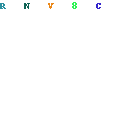
"NPR" and "hip" are not terms you think about seeing in the same sentence. NPR's news program , The Bryant Park Project, will change your mind. It has all the requisite elements of hipness: underground following, irreverence, Web 2.0. Web 2.0? On a radio show? On NPR? That's right.
Taking it's name from their studio location high above New York City's Bryant Park, the BPP’s description says it's:
"...a blog, radio show, podcast and ongoing discussion of the news. On the radio, The Bryant Park Project is a morning drive-time news show that will change your life, speed up your commute, and jack your test scores 50 points — in whatever order you choose. On the Web, The Bryant Park Project is a glorious digital river of podcasts, videos, photos, blogging, debating, and giblets so cool we're afraid to name them. Do you belong here? You bet. Look, they let the rest of us in. Our gang aims to make you feel at home, with surprising interviews and tasty segments soaked in fully carbonated NPR smarts. So pull up a chair, will ya?"
See what I mean?
Hosted by NBC News and MTV veteran Alison Stewart and NPR news anchor Rachel Martin, The BPP, as it is called by its listeners, is never the same show twice. With typical radio programs, the host and news anchor don’t talk to each other on air, let alone the producers. On the BPP, everyone talks to everyone, at any time, about most anything. What makes The BPP truly special, however, is how they've seamlessly integrated Web 2.0 technologies with the radio broadcast. It is literally the sum total of these elements which comprise the show. "We were always designed to be as much a digital experience as a radio experience. So, when you look at it from that perspective, being in as many of the Web 2.0 technologies as existed made sense. ", said Laura Conaway, web producer for The Bryant Park Project.
So, how does it all come together? First, the radio show itself consists of several segments: “The A-Block” which covers the day’s top stories, “The Ramble” which covers any topic they find interesting at the time, and “The Most”, where they run down the most blogged about, most commented, most emailed stories on the web that day, as well as top Google search trends. Finally the video podcast within the blog, called “The Rundown”, features the shows' producers sitting in the studio, as comfortable as if they were in your living room, briefing listeners on what topics will be covered for the next day’s show. During the show, The BPP’s Twitter feed is alive with followers interacting with the hosts and staff. “What is cool about it for me is you are working with stuff that that nobody else has ever really worked with yet, at least in the way that we do. I don't know of many radio show that have, sort of, active contact with their listenership that we have through the Twitter feed for instance. “ said Ms. Conaway.
The Tweets(twitter messages) can be as simple as what the crew had brought in for breakfast that day, to requests for photos of voting scenes from around the country on Super Tuesday. All the above are then posted on the BPP’s blog, and via RSS, the posts are fed to the Twitter feed. Listeners found they liked Tweeting each other so much they started a second, community social thread called the BPPDiner. Out of one message Ms. Conaway sent, the feed has grown to over 300 followers since January. If you miss the live show, there’s a podcast available in three flavors: The A-block, full broadcast, and video podcast.
Many times, the show’s content comes from the blog or Twitter discussions. For instance, when a listener made this comment on a blog post about trans-racial adoption last November, “The timing of this NPR story is serendipitous for me. I have long been struggling with my family's in-process trans-racial adoption, but for almost opposing reasons to those in this story???we're a black family attempting to adopt a little white girl.” it became feature story on the radio show a couple of weeks later. Listen here.
The BPP embodies what I mean by "gigamedia"- standing out from the Web 2.0 crowd by taking the technologies available and doing something brand news and seamless with it. “Will it emerge as a wonderful tool for build a large community, the sort of large community you normally think of great big national radio shows having? I don't know.”.Ms. Conaway surmized, “I can tell you that the texture of the experience is great - it's really fun.”
Technorati Tags:
bpp, bppdiner, bryantparkproject, npr, web-20, radio-20, media, new-media, gigamedia, podcast, vlog, rss

















